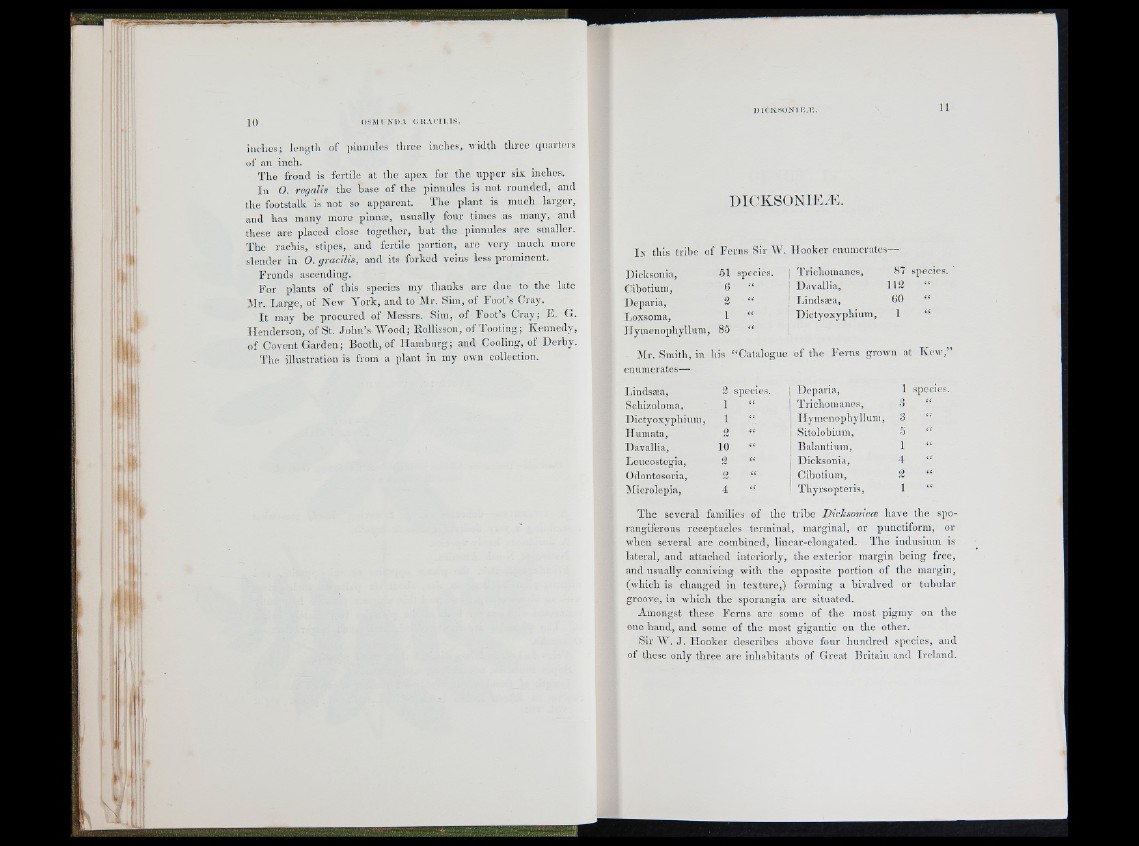
in d ie s ; lengtli of pinnules three inches, width th re e q u arters
of an inch.
T h e fro n d is fertile at th e apex for the u p p e r six inches.
I n 0 . regalis the base of th e pinnules is not ro u n d ed , and
th e footstalk is not so apparent. T h e p lan t is much la rg e r,
and has many more pinncc, u sua lly four times as many, and
these are placed close to g e th e r, b u t th e pinnules are smaller.
T h e rachis, stipes, and fertile p o rtio n , are v ery much more
slender in O. grac ilis, and its fo rk ed veins less p rominent.
F ro n d s ascending.
F o r plants of this species my th an k s are due to th e late
i\lr. L a rg e , of New YTrk, and to Mr. Sim, of F o o t’s Cray.
I t may be p ro cu re d of Messrs. Sim, of F o o t’s C ra y ; E . G,
H en d e rso n , of St. Jo h n ’s W o o d ; Kollisson, of T o o tin g ; K en n ed y ,
of Covent G a rd en ; Booth, of H am b u rg ; and Cooling, of De rb y .
T h e illu stra tio n is from a p lan t in my own collection.
D ICK SO N IIGU.
I n this trib e of Ferns Sir W . H o o k e r enumerates—
Trichomanes,
D avallia,
Lindsæa,
D ic tyoxypbium,
87 species.
1 1 2 “
60
1
Dicksonia, 51 species.
Cibotium, 6
Dep a ria , 2 “
Loxsoma, 1 “
Hymenopbyllum, 85 “
Mr. Smith, in bis “ Catalogue of the F e rn s grown at K ew ,”
enumerates—
Lindsæa, .2 species. species. , D Dep ep a ria , 1 1
species
Schizoloma,
1 “ Trichomanes, 3
1 ) icty oxy phi um,
1 “ Hymen o p h y llum, 3
H um a ta ,
,2 “ Sitolobium, 5
Davallia,
10 i Ba lantium, 1
Leucostegia,
2 “ Dicksonia, 4
Odontosoria,
o 1 Cibotium, 2
Microlepia,
4 T h y rso p te ris, 1
T h e several families of th e trib e Dicksonicce have th e sporangiferous
receptacles termin a l, marginal, or punctiform, or
when several are combined, linear-elongated. T h e indusium is
lateral, and attached in te rio rly , th e ex te rio r ma rg in be in g free ,
and usually conniving w ith th e opposite p ortion of th e margin,
(which is changed in te x tu re ,) forming a bivalved or tu b u la r
groove, in w hich th e sporangia are situated.
Amongst these F e rn s are some of th e most pigmy on the
one h an d , and some of the most gigantic on th e other.
Sir W . J . H o o k e r describes above four h u n d re d species, and
of these only th re e arc in habitants of G re a t B rita in and Ire lan d .